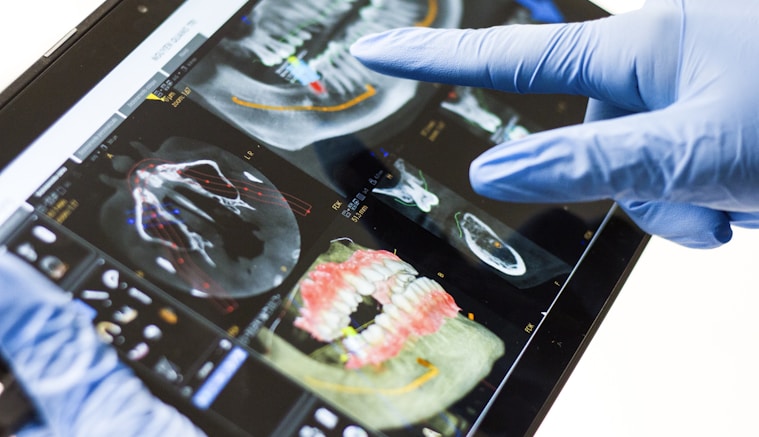Everything You Need to Know About Teeth Names, Teeth Numbers and Their Functions
An in-depth look at the number of teeth humans have, the teeth names, teeth numbers and the functions of different types of teeth.
Teeth play a vital role in our daily lives, allowing us to bite, chew, and speak properly. Understanding teeth names and numbers can help us communicate effectively with dental professionals and maintain good oral health. In this comprehensive blog post, we will explore the number of teeth humans have, the functions of different types of teeth, and answer some frequently asked questions to enhance your dental knowledge.
How Many Teeth Do Humans Have?
Adults typically have a total of 32 teeth, consisting of four types: incisors, canines, premolars, and molars. However, it's important to note that some individuals may have fewer teeth due to various reasons, such as tooth extraction or congenital conditions.
How Many Teeth Do Adults Have and What are the Teeth Names?
Adults have a total of 32 permanent teeth, which includes:
Incisors (8 teeth): Located in the front of the mouth, incisors are sharp and used for cutting and biting into food.
Canines (4 teeth): Positioned on each side of the incisors, canines are pointy and aid in tearing food.
Premolars (8 teeth): Also known as bicuspids, premolars assist in chewing and grinding food.
Molars (12 teeth): Positioned at the back of the mouth, molars have a larger surface area and are primarily responsible for chewing and grinding food.
How Many Baby Teeth Do Humans Have and What are the Teeth Names?
Children typically have a set of 20 primary, or baby teeth. This set includes:
Incisors (8 teeth): Four in the upper jaw and four in the lower jaw.
Canines (4 teeth): Two in the upper jaw and two in the lower jaw.
First Molars (8 teeth): Four in the upper jaw and four in the lower jaw.
Teeth Numbers and Their Locations:
In dentistry, a numbering system is used to identify each tooth in the mouth. This system allows dental professionals to communicate and reference specific teeth accurately. Here is a brief overview of the tooth numbers and their locations:
Universal Numbering System: The Universal Numbering System assigns a unique number to each tooth in the mouth, starting from the upper right and moving counterclockwise to the upper left, then to the lower left, and finally to the lower right. The numbers range from 1 to 32 for permanent teeth and A to T for primary teeth.
Palmer Notation System: The Palmer Notation System uses symbols to represent each tooth in the mouth. The symbols consist of a bracket, dot, or triangle, combined with a number that indicates the quadrant and tooth position.
FDI Tooth Numbering System: The FDI (Fédération Dentaire Internationale) Tooth Numbering System is a globally recognized system that uses two digits to designate each tooth. The first digit represents the quadrant, and the second digit indicates the tooth’s position within that quadrant.
Zsigmondy-Palmer System: The Zsigmondy-Palmer System is a variation of the Universal Numbering System, using a two-digit number to represent each tooth. The first digit identifies the quadrant, while the second digit indicates the tooth's position within that quadrant.
The following is a breakdown of the tooth numbers in the mouth:
Permanent Teeth
Upper Right Quadrant:
Central Incisor: 1
Lateral Incisor: 2
Canine (Cuspid): 3
First Premolar (First Bicuspid): 4
Second Premolar (Second Bicuspid): 5
First Molar: 6
Second Molar: 7
Third Molar (Wisdom tooth): 8
Upper Left Quadrant:
Central Incisor: 11
Lateral Incisor: 12
Canine (Cuspid): 13
First Premolar (First Bicuspid): 14
Second Premolar (Second Bicuspid): 15
First Molar: 16
Second Molar: 17Third Molar (Wisdom tooth): 18
Lower Left Quadrant:
Central Incisor: 21
Lateral Incisor: 22
Canine (Cuspid): 23
First Premolar (First Bicuspid): 24
Second Premolar (Second Bicuspid): 25
First Molar: 26
Second Molar: 27
Third Molar (Wisdom tooth): 28
Lower Right Quadrant:
Central Incisor: 31
Lateral Incisor: 32
Canine (Cuspid): 33
First Premolar (First Bicuspid): 34
Second Premolar (Second Bicuspid): 35
First Molar: 36
Second Molar: 37
Third Molar (Wisdom tooth): 38
Primary (Baby) Teeth:
The primary teeth are labeled using letters from A to T, following the same quadrant system as the permanent teeth.
It's important to note that the numbering systems may vary slightly depending on the country or dental practice. However, the general principles remain consistent across most systems.
Understanding the tooth numbers can help you communicate effectively with your dentist and dental professionals when discussing specific teeth or treatment options.
Frequently Asked Questions
When do baby teeth start to fall out?
Baby teeth generally start to fall out around the age of 6 or 7, making way for permanent teeth. The process continues until the early teen years.
What is the purpose of wisdom teeth?
Wisdom teeth, also known as third molars, usually erupt between the ages of 17 and 25. However, they are not necessary for proper chewing or biting and often cause problems due to their misalignment or lack of space in the jaw. Therefore, wisdom teeth are commonly removed.
Why are dental check-ups important?
Regular dental check-ups are crucial for maintaining oral health. Dentists can identify any dental issues early on, provide preventive care, and recommend necessary treatments to prevent more extensive problems.
How should I care for my teeth and gums?
Proper oral hygiene practices include brushing your teeth at least twice a day, flossing daily, using mouthwash, and visiting your dentist regularly for check-ups and cleanings. A balanced diet and avoiding sugary foods and drinks also contribute to maintaining healthy teeth and gums.
Conclusion
Understanding teeth names and numbers is essential for effective communication with dental professionals and maintaining optimal oral health. With 32 permanent teeth and a set of 20 primary teeth, each tooth type serves a specific function in the chewing and biting process. By practicing good oral hygiene and scheduling regular dental check-ups, you can enjoy a healthy smile for a lifetime.


